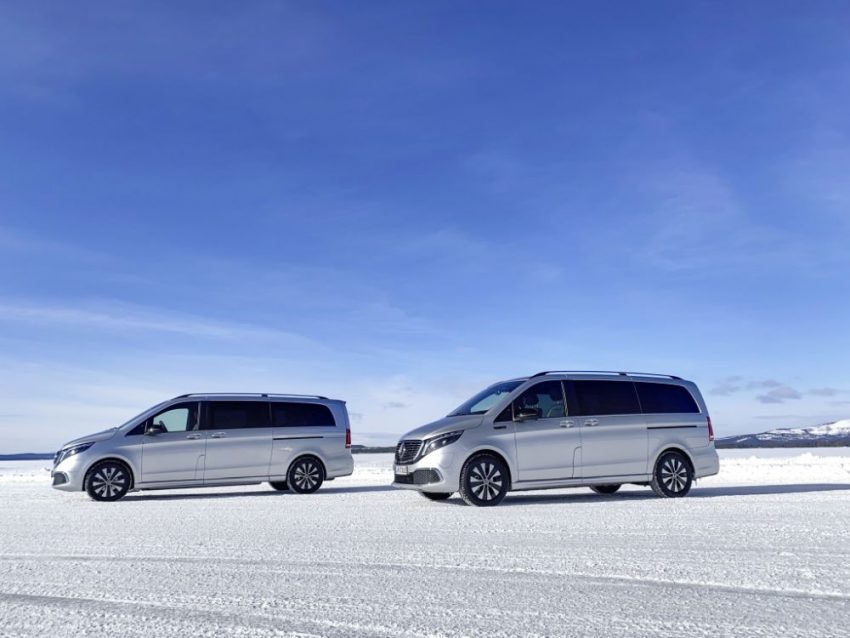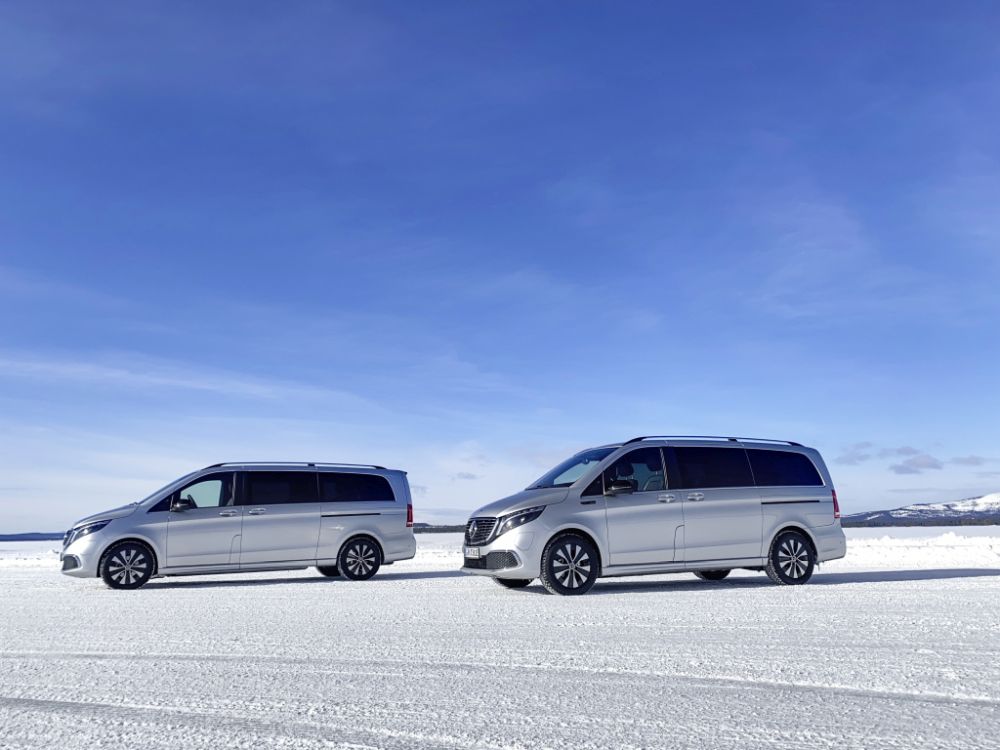
25.3.2020. Internal combustion engine with the same requirements as their counterparts on private and commercial electric vehicles make customers complete reliability and availability even in adverse conditions. What, exactly, the Mercedes Benz 300 focus state during winter testing eqv (power consumption: 26,4-was 26.3 kWh/100 km; CO2 emissions combined: 0 g/km)1.
For a few weeks, the development team under certain climatic conditions Arjeplog, Sweden, Benz, hardness test, Mercedes first battery-electric Premium-large sedan-was made. Minus 30 degrees Celsius, icy roads and deep snow proved its operational capacity EQV temperatures under extreme conditions. Thus, in the second half of the year of the vehicle of 2020, he took one of the last milestones on the way to market.
The car ran a variety of expensive tests with a testing site near the Arctic Circle. More than 30 engineers, electronic and mechanical specialist Mercedes-Benz Vans, tried and tested, on a frozen lake, Use of special equipment with extreme cold, while comfort and ergonomics to the effect of, among other things. Cold in the cell, drive components, software, and the startup behavior of the interface, as well as cold hedge they tested, and all analysis and thermal management of vehicles is optimized.
Another important element of the tests: the charging behavior. This is about 80 percent within 45 minutes down to 10 eqv can be a repository for maximum capacity, Quick charging function. Traveling this particular flexibility is a big plus, but business, must be reliable regardless of temperature.
Content
- The advantages of electric vehicles in the cold
- EQ “”EQV as a second model, technology brand
- 300 technical data for Mercedes-Benz EQV
The advantages of electric vehicles in the cold
When it is cold skillfully, Mercedes-Benz EQV EQV electric vehicles to the advantages of your living room or Office-me riders for Mercedes Application, such as heating to melt snow or ice, the windshield in time for departure and enter the desired temperature in the inside of the front is allowed. This EQV traction battery, network, and it is removed because the charging station, December is not connected to the electricity that is used for expenses. This comfort is a plus.
In the ice and snow are equally important to reliable operation. Only under winter conditions, under the floor, the depth of the central organizing and Lithium-ion battery, has a positive effect on driving and trial runs proves EQV. Customers for use in the Arctic environment test result: EQV is suitable.
“Again the test last winter and the car is very well made and in each case, we requested EQV. Mercedes-Benz Vans at 512@VANs Goblets Benjamin, Bass thanks to extensive testing, Sunday, we made it to the last milestone on the path to maturity, ” he said. “In particular, electrical and thermal management a core discipline for vans, we’ve got the important information to make eqv safer and more comfortable.”
EQ “”EQV as a second model, technology brand
This is EQV to the market in the second half of the year 2020 is made. Thus, the electric Mercedes (power consumption: tool–7 kWh/100 km)ARI; CO2 emissions combined: 0 g/km 2 the second model “EQ-Benz technology, brand” then together for a large sedan. This two wheelbase 3.500 kg permissible total weight EQV are offered. The high-voltage battery is integrated in the bottom of the trunk, so it won’t be an internal loss. This allows for flexible installation of individual seats or seat rows 6-seater converted to 8 seater 7 or EQV.
EQV this, another highlight is the multimedia system with MBUX keyword is “Hey Mercedes”, both with custom images and a touch screen EQ settings, Smart Sound Control. Few and short stops charging automatically calculates a route faster and more convenient installation times, for example, which EQ-optimized Navigation. Electric drive train (eats) that sits on the front axle eqv. Peak power (204 hp) 150 kW Mercedes-Benz until EQV 362 Newton meters maximum torque. Maximum speed 160 km/h.
300 technical data for Mercedes-Benz EQV
CO2-emissions
0 g/km
Power consumption (combined)1
4 and the amount is at the level of 100 kWh/km
Range (combined)1, 2
417-418 km according to NEDC ()
Charging standard
CCS
A wallbox or a public charging station, at least at load time (AC load, kW 11)
(0-100 %) < 10 h
Fast charging time at a charging station Minimum
The 50 kW DC load series
DC load, 110 kW (Option)
approx. 80 min. (10-80% SoC)
(10-80% SoC)is approximately 45 min.
Driver
Front-wheel drive
Power (Peak)
(204 hp)150 kW
(Time)Performance
(95 hp)to 70 kW
Max. Torque
362 Nm
Battery
Lithium-Ion
Battery capacity (usable)
90 kWh
(Installed)battery capacity
100 kWh
Lengths
5.140 mm 5.370 mm
Wheelbase
Mm 3,200 mm and 3,430
Maximum speed
(Option) (serial) 140 km/Tu-160 km/h
Luggage space (max. depending on the equipment)
Previous Liter 1,030
zGG
3,500 kilograms
1, the power consumption and range of Regulation 692/2008/EC was determined on the basis of. Vehicle range and power consumption depends on configuration.
2 the actual range also individual driving style, air conditioning/heating, road and traffic situation, the external temperature, use, etc depends on. and, if any, may be different.


(Power consumption: 26,4-was 26.3 kWh/100 km)EQV winter testing; CO2 emissions combined: 0 g/km